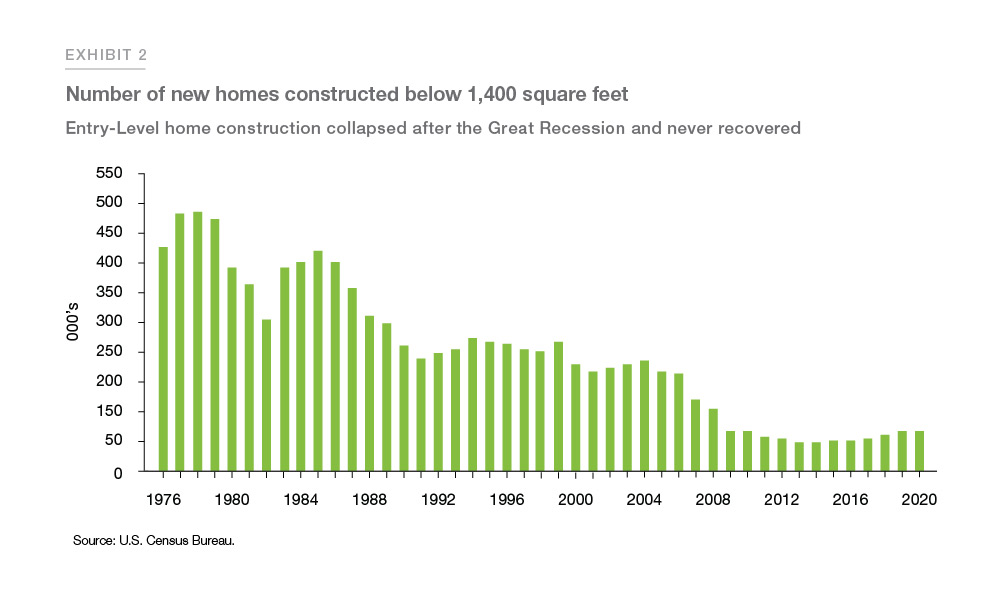For years, the United States has faced a housing shortage, exacerbated by the COVID-19 pandemic. A recent analysis from Freddie Mac examines how a combination of strong demand and low mortgage rates have contributed to the shortfall, with estimates indicating the shortage rose 52 percent from 2.5 million in 2018 to 3.8 million in 2020.
The research note—which builds on an article Sam Khater, Freddie Mac’s Vice President and Chief Economist, wrote in April—points to the long-term decline in the construction of single-family homes as a main driver of the housing shortfall.
“As we navigate our way through the year and get beyond the pandemic, we expect the housing supply shortage to continue to be one of the largest obstacles to inclusive economic growth in the U.S.,” Khater wrote. “Simply put, we must build more single-family entry-level housing to address this shortage, which has strong implications for the wealth, health and stability of American communities.”
The number of new entry-level homes has fallen precipitously since the 1970s, according to the estimates. In 2020, Freddie Mac estimated that only 65,000 new entry-level homes were completed, less than one-fifth of the same homes constructed in the late 1970s and early 1980s.

High demand and low mortgage rates have driven the shortfall even higher. “This high demand has driven the housing supply shortage even higher and has also caused home prices to rise over 12% from a year ago,” Freddie Mac wrote.
The research notes several other reasons for the shortfall, including:
- Lack of available construction labor.
- Increasing raw material costs. During the pandemic, lumber prices increased more than 150 percent.
- Land use regulations and zoning restrictions.
- Demographic changes. In particular, Millennials, which are the largest demographic in the United States, are reaching prime first-time homebuying age.
The number of new entry-level homes has fallen precipitously since the 1970s, according to the estimates. In 2020, Freddie Mac estimated that only 65,000 new entry-level homes were completed, less than one-fifth of the same homes constructed in the late 1970s and early 1980s.
